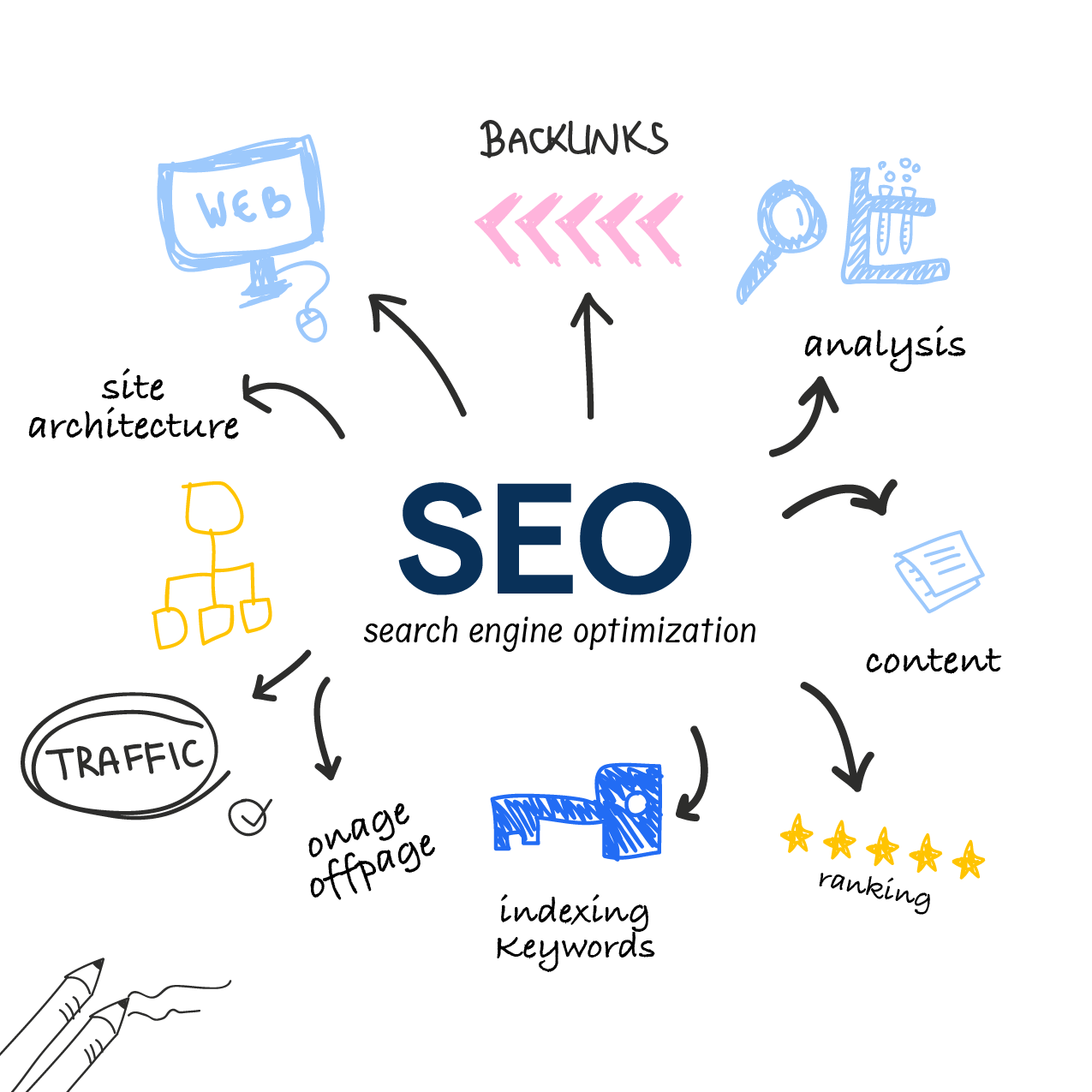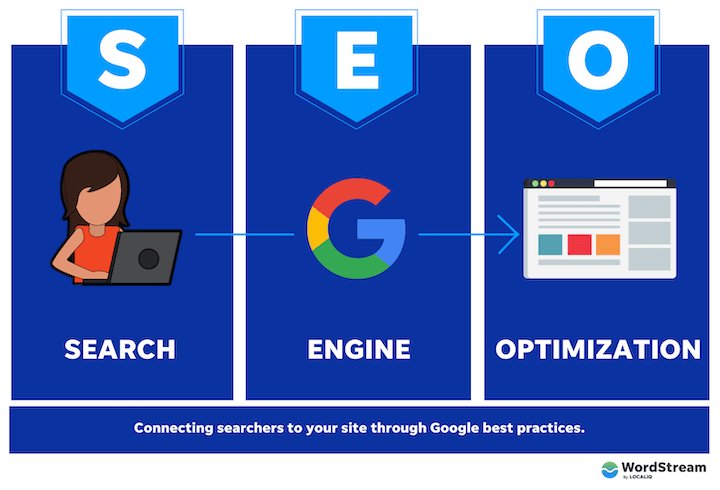
Search Engine Optimization (SEO) Explained
SEO, or Search Engine Optimization, is a multifaceted process designed to improve a website's visibility in search engine results pages (SERPs). The primary goal is to increase the quantity and quality of organic traffic to a website.[1] This involves a combination of technical, content-related, and creative strategies aimed at helping search engines understand and rank a website's content effectively.[2]
According to www.iAsk.Ai - Ask AI:
SEO is a crucial marketing strategy for any business with an online presence.[1] It involves optimizing a website to rank higher in search engine results, making it easier for potential customers to find the business when they search for relevant products, services, or information.[1]
SEO is not a one-time task; it requires ongoing effort and adaptation to maintain and improve rankings.[3] The core of SEO involves three main types: on-page, off-page, and technical SEO.[1]
Why is SEO Important?
SEO is important because search engines are the starting point for most online experiences.[1] Millions of people use search engines daily to find information, products, and services. If a website isn't visible in search results, it's missing out on potential customers and brand awareness.[1] SEO helps businesses connect with potential customers at every stage of their customer journey.[1]
How SEO Works
Search engines like Google use a three-step process to deliver search results: crawling, indexing, and ranking.[1]
- Crawling: Search engines use bots (also called "spiders" or "crawlers") to discover new and updated content on the internet.[1]
- Indexing: Once crawled, pages are stored in a massive database (index), where search engines analyze their content, keywords, and structure.[1]
- Ranking: When a user searches, the search engine retrieves the most relevant pages based on hundreds of ranking factors, such as content quality, backlinks, and user experience.[1]
Key Components of SEO
Effective SEO involves several key components:
- Keyword Research: Identifying the terms and phrases that potential customers use when searching for information, products, or services related to a business.[1]
- Content Creation: Developing high-quality, relevant, and engaging content that satisfies user intent and provides value.[1]
- On-Page Optimization: Optimizing the content and structure of a website to make it search engine-friendly. This includes optimizing title tags, meta descriptions, headings, and image alt text.[1]
- Off-Page Optimization: Building a website's authority and credibility through activities like link building, social media engagement, and brand mentions.[1]
- Technical SEO: Ensuring a website is technically sound and optimized for search engines. This includes improving site speed, mobile-friendliness, security, and site architecture.[1]
SEO Techniques
SEO techniques can be broadly categorized into white hat and black hat methods.[4]
- White Hat SEO: Techniques that adhere to search engine guidelines and focus on providing value to users. This includes creating high-quality content, optimizing for relevant keywords, and building natural backlinks.[4]
- Black Hat SEO: Techniques that violate search engine guidelines and attempt to manipulate search rankings. This includes keyword stuffing, cloaking, and buying links.[4]
SEO Best Practices
Several best practices can help improve a website's SEO:
- Create High-Quality Content: Content should be well-written, informative, and engaging, and it should satisfy the user's search intent.[1]
- Optimize for Keywords: Identify relevant keywords and incorporate them naturally into the website's content, title tags, meta descriptions, and other on-page elements.[1]
- Build High-Quality Backlinks: Acquire backlinks from authoritative and relevant websites to improve a website's credibility and ranking.[1]
- Optimize for Mobile: Ensure a website is mobile-friendly and provides a seamless user experience on all devices.[1]
- Improve Site Speed: Optimize a website's loading speed to improve user experience and search engine rankings.[1]
- Use Descriptive URLs: Parts of the URL can be displayed in search results as breadcrumbs, so users can also use the URLs to understand whether a result will be useful for them.[5]
- Update Content Regularly: Regularly publish new articles or posts, and update existing content to keep it fresh and relevant.[3]
Measuring SEO Success
Tracking and analyzing key SEO metrics is essential for measuring success and making data-driven decisions.[1] Important metrics include:
- Organic Traffic: The number of visitors coming from search engines.[1]
- Keyword Rankings: The position of a website's pages for target keywords.[1]
- Click-Through Rate (CTR): The percentage of users who click on a search result.[1]
- Bounce Rate & Dwell Time: How long users stay on a page and whether they engage with the content.[1]
- Conversion Rate: How well organic traffic leads to conversions (sales, sign-ups, etc.).[1]
The Future of SEO
SEO is constantly evolving, with AI, mobile-first indexing, and user experience becoming increasingly important.[1] Businesses must adapt to these changes to maintain their visibility and relevance in the digital landscape.[1]
The most effective way to improve a website's ranking and visibility is by implementing a comprehensive SEO strategy that includes keyword research, high-quality content creation, on-page optimization, off-page optimization, and technical SEO. It's also important to regularly track and analyze SEO performance and adapt the strategy as needed.
Authoritative Sources
- What is SEO? A Search Engine Optimization Guide. [Wordstream]↩
- Search engine optimization. [Wikipedia]↩
- Search Engine Optimization. [digital.gov]↩
- White hat versus black hat techniques. [Wikipedia]↩
- SEO Starter Guide: The Basics | Google Search Central | Documentation. [Google for Developers]↩


Sign up for free to save this answer and access it later
Sign up →